
Timeless Bestiary: Kalemanvala
I’m working on a bestiary for the creatures that inhabit the world of the dragon twins, Timeless. Many requested an aquatic creature this time, so here it is, and a big one!
~~
Timeless Bestiary: Kalemanvala (The Stormborne Nightmare)
[Pronunciation]
The kalemanvala inhabits the open northern sea, where the temperature is colder, as it cannot survive in warm waters. It floats adrift, being carried by the ocean currents and waves, although the “dome” on its underside and the tendrils attached to it are able to provide some movement in case it needs it.
The kalemanvala may look like a gargantuan jellyfish, but it is in fact a colony of thousands and thousands of smaller organisms, all connected by a rudimentary system of nervous fibers.
These smaller organisms have different shapes and roles, and the different types form the six parts of the kalemanvala’s body.
The crests are the first part, and the most visible when the kalemanvala is floating on the open ocean. They act like sails on a ship, catching the wind and propelling the creature.
The crests are attached to the “hull.” The hull is a gas-filled, gelatinous bladder which keeps the kalemanvala floating.
Attached to the hull and hidden under the waves, there’s the dome and its tendrils. The dome is able to perform pulsating movements that helps the kalemanvala move. It also protects the reproductive tendrils on the underside of the kalemanvala.
On the underside of the hull and within the dome, there are three different types of tentacles: the shorter ones are responsible for reproduction. A single kalemanvala has both male and females tentacles, which will release sperm and eggs in the water, and those will form an egg. Many eggs are created at once within the cloud of released sperm and eggs. The eggs then attach themselves to a rocky surface and become a root, where they will reproduce asexually, releasing tiny cloned domes that will eventually become a full kalemanvala.
The long, thin tendrils are responsible for catching and digesting food.
The longer, thicker tendrils are responsible for defense and killing prey. They are filled with tiny, venomous needles which sting prey. Their venom paralyzes the victim’s heart and lungs, killing it quickly. Kalemanvala feed on small fishes and any small sea animals who dare or are foolish enough to swim close to its tentacles.
Kalemanvalas are living biomes themselves. Many small fishes and rustaceans make their home among the kalemanvala’s tendrils. They help clean and protect the kalemanvala from parasites, while the kamelanvala itself protects them against their own predators. Even some species of algae, anemones and barnacles grow on the kalemanvala’s hull.
Many sea animals feed on young kalemanvalas, but fully grown, adult ones have no natural predators. Kalemanvalas never stop growing, and can regenerate as long as torn parts have at least one of the organisms that make their six parts.
The kalemanvala is bioluminescent, and emits a red-pinkish light with the purpose of attracting prey.
Kalemanvala are called ‘stormborne nightmares’ by Varanar who live on the continent’s coast. Sometimes, kalemanvala wash on the shore after storms, making the beaches extremely dangerous and practically unusable.
A stranded kalemanvala can kill not only Varanar, but also animals who live on the shore, including beach animals and even birds. Even after death, a kalemanvala’s defensive tendrils can still shoot their venomous needles into anyone who steps on it. Many coastal Varanar have lost their lives to kalemanvalas, either on the sea, or on the shore, trying to clean their coasts.
The fact that storms tend to bring these massive creatures, along with the red light they emit, make them a source of coastal Varanar ghost stories.
It’s commonly said that a kalemanvala is the spirit of sailors who perished on the sea. The legends state that the ocean made them one with their ship and transformed their spirits into a vengeful being who comes back to the land in search of more souls to drag into the deep cruel blue.
~~
Timeless Bestiary: Kalemanvala (The Stormborne Nightmare)
[Pronunciation]
The kalemanvala inhabits the open northern sea, where the temperature is colder, as it cannot survive in warm waters. It floats adrift, being carried by the ocean currents and waves, although the “dome” on its underside and the tendrils attached to it are able to provide some movement in case it needs it.
The kalemanvala may look like a gargantuan jellyfish, but it is in fact a colony of thousands and thousands of smaller organisms, all connected by a rudimentary system of nervous fibers.
These smaller organisms have different shapes and roles, and the different types form the six parts of the kalemanvala’s body.
The crests are the first part, and the most visible when the kalemanvala is floating on the open ocean. They act like sails on a ship, catching the wind and propelling the creature.
The crests are attached to the “hull.” The hull is a gas-filled, gelatinous bladder which keeps the kalemanvala floating.
Attached to the hull and hidden under the waves, there’s the dome and its tendrils. The dome is able to perform pulsating movements that helps the kalemanvala move. It also protects the reproductive tendrils on the underside of the kalemanvala.
On the underside of the hull and within the dome, there are three different types of tentacles: the shorter ones are responsible for reproduction. A single kalemanvala has both male and females tentacles, which will release sperm and eggs in the water, and those will form an egg. Many eggs are created at once within the cloud of released sperm and eggs. The eggs then attach themselves to a rocky surface and become a root, where they will reproduce asexually, releasing tiny cloned domes that will eventually become a full kalemanvala.
The long, thin tendrils are responsible for catching and digesting food.
The longer, thicker tendrils are responsible for defense and killing prey. They are filled with tiny, venomous needles which sting prey. Their venom paralyzes the victim’s heart and lungs, killing it quickly. Kalemanvala feed on small fishes and any small sea animals who dare or are foolish enough to swim close to its tentacles.
Kalemanvalas are living biomes themselves. Many small fishes and rustaceans make their home among the kalemanvala’s tendrils. They help clean and protect the kalemanvala from parasites, while the kamelanvala itself protects them against their own predators. Even some species of algae, anemones and barnacles grow on the kalemanvala’s hull.
Many sea animals feed on young kalemanvalas, but fully grown, adult ones have no natural predators. Kalemanvalas never stop growing, and can regenerate as long as torn parts have at least one of the organisms that make their six parts.
The kalemanvala is bioluminescent, and emits a red-pinkish light with the purpose of attracting prey.
Kalemanvala are called ‘stormborne nightmares’ by Varanar who live on the continent’s coast. Sometimes, kalemanvala wash on the shore after storms, making the beaches extremely dangerous and practically unusable.
A stranded kalemanvala can kill not only Varanar, but also animals who live on the shore, including beach animals and even birds. Even after death, a kalemanvala’s defensive tendrils can still shoot their venomous needles into anyone who steps on it. Many coastal Varanar have lost their lives to kalemanvalas, either on the sea, or on the shore, trying to clean their coasts.
The fact that storms tend to bring these massive creatures, along with the red light they emit, make them a source of coastal Varanar ghost stories.
It’s commonly said that a kalemanvala is the spirit of sailors who perished on the sea. The legends state that the ocean made them one with their ship and transformed their spirits into a vengeful being who comes back to the land in search of more souls to drag into the deep cruel blue.
Category Artwork (Digital) / Fantasy
Species Aquatic (Other)
Size 1280 x 3620px
File Size 3.09 MB
Listed in Folders
i'm looking at the young stages nice and tiny. Super cute then the full size and HOLY COW BELLS!!!! (Amazing work WhiteMantis )
Given it was mentioned that the kalemanvala develop colonies of fish, probably as they grow bigger, the fish would lure in bigger fish which get stung to buggery and then eaten, making the kalemanvala grow bigger, repeat cycle until their fish colonies are drawing in things the size of great whites and whales...
And as Draco10901 said, the bioluminescence would when young attract plankton, which would in effect attract in the smaller plankton feeders which... you get the cycle of what happens next.
And as Draco10901 said, the bioluminescence would when young attract plankton, which would in effect attract in the smaller plankton feeders which... you get the cycle of what happens next.

 FA+
FA+







 AmaDenchArt
AmaDenchArt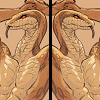

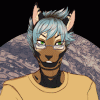



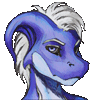



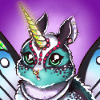













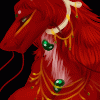

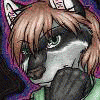


Comments